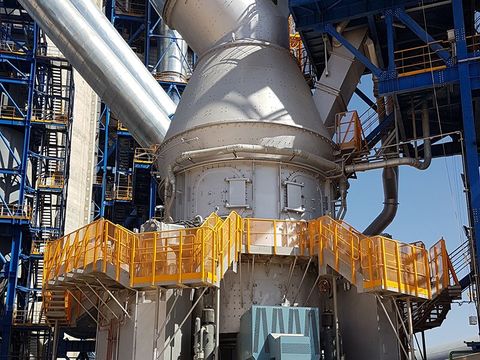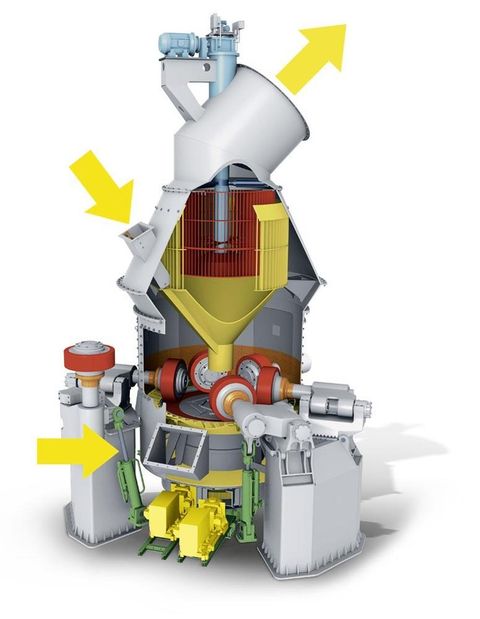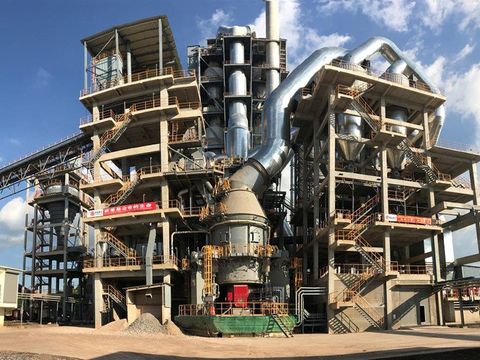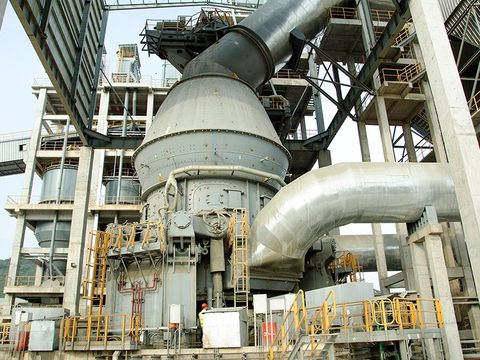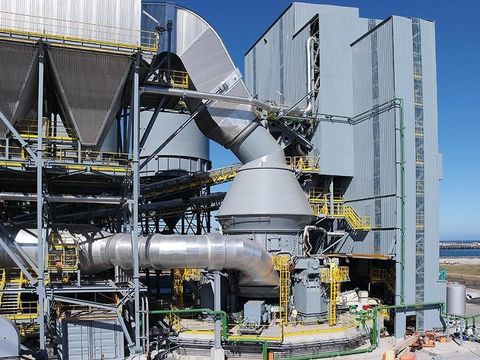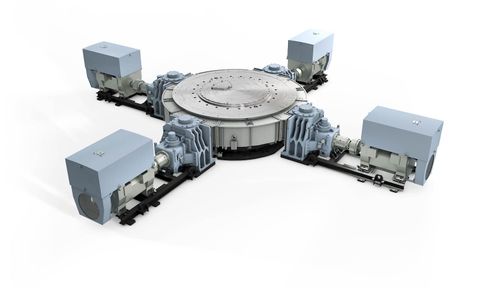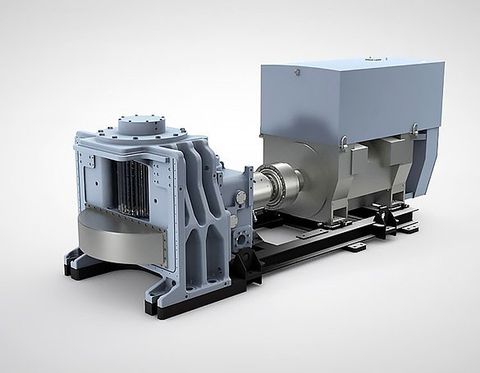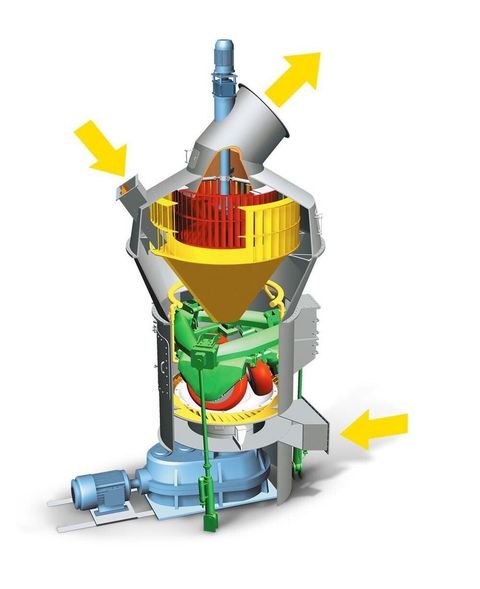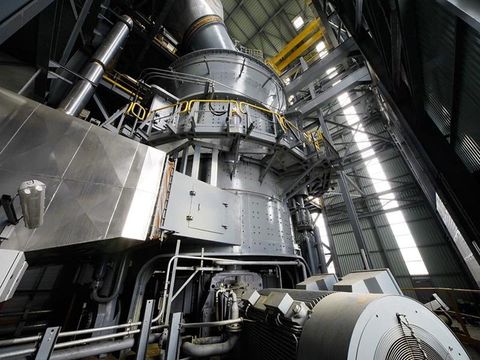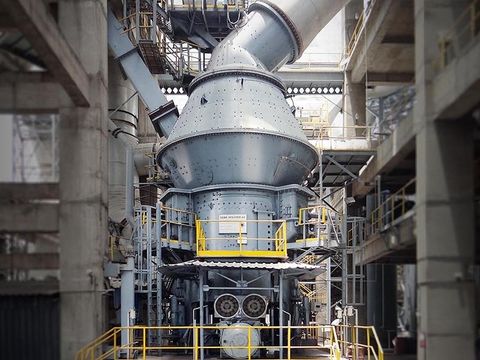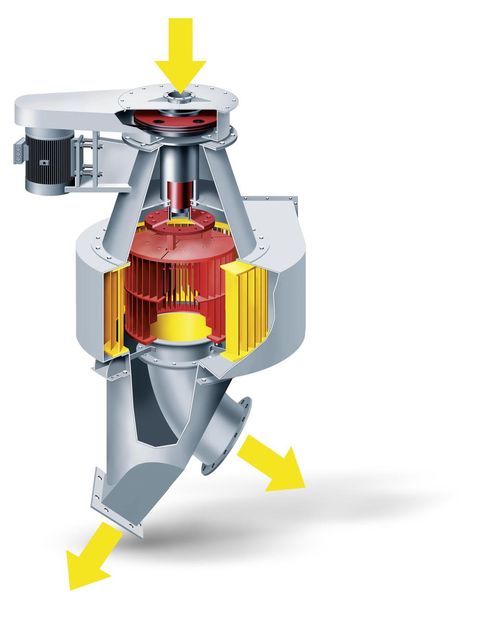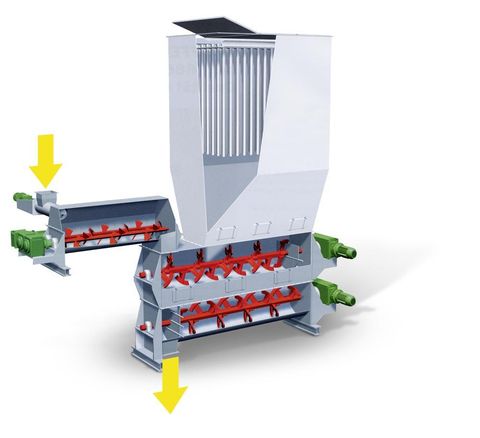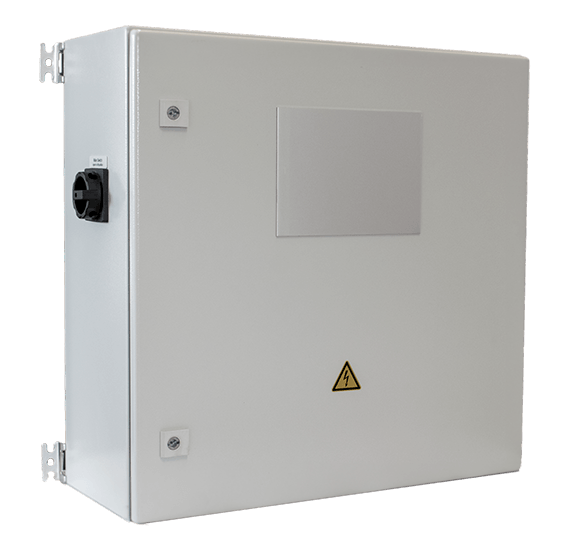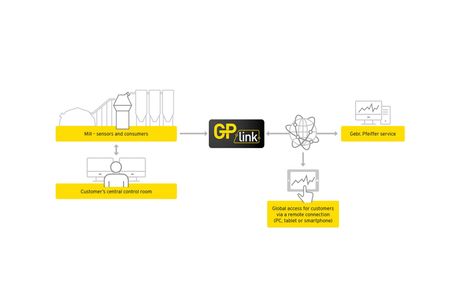VERTICAL ROLLER MILL VRM
With our partner Gebr. Pfeiffer, they are the pioneers of vertical roller mill technology for material grinding. The inventors of mill drives with more than 10,000 kW, modular ready2grind systems and gypsum calcination in vertical roller mills. The worldwide sought-after specialist for innovative solutions, with its own development department and strong German engineering have been the technology driver for more than 155 years.
Our vertical roller mills are widely used in various key industries.
Cement, Gypsum, Lime, Ceramics
MVR VERTICAL ROLLER MILL (CONVENTIONAL DRIVE)
For the preparation of cement raw material, cement, and granulated blast-furnace slag with small to medium output rates, the MVR mill with conventional drive is the right choice. This mill type is by the way the core piece of our modular ready2grind system. High plant availability and optimized maintenance concepts are the features that make sure the mill meets the ever rising requirements of the industry. In combination with the conventional drive, the MVR mill ensures small to medium output rates, reliably and on the long term.
Up to six stationary grinding rollers roll on a rotating grinding table. The material is drawn in between the rollers and grinding table and ground by pressure and shear. The required pressure forces are produced by a lever system comprising, among others, a roller arm, along with a hydropneumatic tension system. After being rolled over by the rollers, the material is conveyed to a stationary nozzle ring due to the rotation of the grinding table. Gases (air or hot gas) flow through this nozzle ring, take up the ground and dried material and convey it to the classifier where it is separated by the rotating wheel (rotor) into grits and fines. The grits fall back into the grinding zone whereas the fines leave the classifier with the gas flow for being separated in cyclones or a filter.
| Technical data | |
|---|---|
| Throughput rate | up to 650 t/h |
| Mill drive | up to 6,500 kW |
| Number of grinding rollers | up to 6 |
| Feed size | up to 120mm |
| Feed moisture | up to 20% |
| Target fineness degrees | 60 - 100 um |
| Classifier | high efficiency classifier |
| Grinding table diameter | up to 6,000 mm |
| Gas volume flow | 1,500,000 m3/h |
| Feed material | cement raw material |
MVR Vertical Roller Mill (MultiDrive)
High throughput rates, permanent plant availability , optimized maintenance concepts – features of the MVR mill and the patented MultiDrive® enabling Gebr. Pfeiffer to meet the ever rising expectations of the industry. Thanks to the innovative drive and active redundancy, an unintended stop of the grinding process is practically excluded. No matter what type of material has to be ground – cement raw material, cement clinker or granulated blast-furnace slag – and how different their grindability and abrasiveness may be, the MVR mill ensures throughput rates of a different dimension, around the clock, reliably and on the long term.
Up to six stationary grinding rollers roll on a rotating grinding table. The material is drawn in between the rollers and grinding table and ground by pressure and shear. The required pressure forces are produced by a lever system comprising, among others, a roller arm, along with a hydropneumatic tension system. After being rolled over by the rollers, the material is conveyed to a stationary nozzle ring due to the rotation of the grinding table. Gases (air or hot gas) flow through this nozzle ring, take up the ground and dried material and convey it to the classifier where it is separated by the rotating wheel (rotor) into grits and fines. The grits fall back into the grinding zone whereas the fines leave the classifier with the gas flow for being separated in cyclones or a filter.
| Technical data | |
|---|---|
| Throughput rate | up to t50 t/h |
| Mill drive | up to 18,000 kW |
| Number of grinding rollers | up to 6 |
| Feed size | up to 120mm |
| Target fineness degrees | 1,500 - 6,000 cm2/g |
| Classifier | high efficiency classifier |
| Grinding table diameter | up to 6,700 mm |
MultiDrive®
The MultiDrive®, which has proven successful in industrial operation since 2008, was developed by Gebr. Pfeiffer in cooperation with Siemens/Flender especially for the MVR mill. What makes this multiple drive unique all over the world is the fact that there may be up to 6 independent drive units which are actively redundant both electrically and mechanically. Another feature to be found only with this type of drive: delicate gearbox components are not located under the grinding table, thus ensuring an unparalleled technical availability of the drive system. In case a drive unit fails, which is rather improbable, the unit concerned can be taken out of the system, with the others still operating, so that your MVR mill will continue producing, sometimes even without a reduction of throughput. One more benefit among several: thanks to the perfectly adapted combination of Pfeiffer MVR mill and MultiDrive® , you will achieve production rates for which you would normally have to provide two vertical mills operating in parallel.
3, 4 or 6 identical MultiDrive® units comprising motor, coupling, and gear driving the girth gear of the table thrust bearing, with a total power of 18,000 kW.
| Technical data | |
|---|---|
| Drive power | up to 18,000 kW |
| Number of drive units | up to 6 |
| Either with or without speed control via frequency converter |
MPS VERTICAL ROLLER MILL
Highest flexibility with constant product quality, individually conceived, suitable for a variety of applications, undergoing constant development: with a number of more than 2800 mills sold, the MPS vertical mill is our proven all rounder. It can be used for the grinding of coal, petcoke, clay, limestone, quicklime and many other materials no matter how different their grindability and abrasiveness may be or whatever fineness or drying degree is required. The MPS mill also grinds, dries, calcines, and classifies gypsum without any problem, all in a single machine, for any fineness requested and considering individual requirements. The MPS vertical roller mill - built to last, reliable and energy-efficient - is the optimum solution when it comes to performing several process steps in one unit.
Three stationary grinding rollers roll on a rotating grinding table. The material is drawn in between the rollers and grinding table and ground by pressure and shear. The required pressure forces are produced by a hydropneumatic tension system. After being rolled over by the rollers, the material is conveyed to a stationary nozzle ring due to the rotation of the grinding table. Gases (air or hot gas) flow through this nozzle ring, take up the ground and dried material and convey it to the classifier where it is separated by the rotating wheel (rotor) into grits and fines. The grits fall back into the grinding zone whereas the fines leave the classifier with the gas flow for being separated in cyclones or a filter.
| Technical data | |
|---|---|
| Throughput rate | up to 110 t/h |
| Mill drive | up to 2,000 kW |
| Number of grinding rollers | 3 |
| Feed size | up to 100 mm |
| Target fineness degrees | 60 - 100 um |
| Classifier | high efficiency classifier |
| Grinding table diameter | up to 4,500 mm |
| Pressure-shock proof | up to 3.5 bar |
| Feed material | coal, petcoke |
SLV HIGH EFFICIENCY SEPARATOR
The Pfeiffer separators have undergone optimization for years by means of CFD simulation on the basis of small-scale investigations and last but not least by making use of our long-time experience. The result is remarkable: owing to their ultra-sharp separation performance and production of high fineness degrees, our high efficiency separators set themselves apart from those of competitors. Even in their third generation. Here it becomes evident what our credo is: never rest but go on striving – in every respect.
| Technical data | |
|---|---|
| Feed rate | up to 400 t/h |
| Target fineness degress | up to 10 um |
| Feed material | cement |
TRT TRIPLEX DRYER
The TRT Triplex dryer operates on the uniflow principle, i.e. material and hot gases flow in the same direction and pass through the dryer tubes from the center outwards. The material to be dried is fed into the innermost tube, it passes through the dryer and is discharged through double pendulum flaps fitted to the dust jacket. The residual moisture of the dried material is set by controlling the exhaust gas temperature and dwell time of the material in the dryer. The hot gas required is produced in a combustion chamber, using solid, liquid or gaseous fuels. Process gases can be used as well. The dryer exhaust gases pass through a filter for dust collection.
| Technical data | |
|---|---|
| Throughput rate | up to 200 t/h |
| Feed size | up to 5 mm |
| Feed moisture | up to 30% (no slurry) |
| Drum diameter | up to 5,000 mm |
| Finished product moisture | up to 0.1% H2O |
LIME HYDRATORS
In the lime hydrator, quicklime fines or quicklime lumps turn into lime hydrate Ca(OH)2 after the addition of water at a temperature of approx. 100°C. The requested residual moisture of the hydrate is regulated by a temperature-controlled water supply and a variable material retention time. Depending on the individual requirements, the hydrator is designed as a one-stage machine (type KLE) or a multi-stage machine (type KLV), with or without premixer. The vapors developing during hydration are dedusted. The filter is an integral part of the lime hydrator. Gravimetric quicklime feed, temperature-controlled water supply, and a sophisticated measuring technology ensure a fully automatic operation of the Pfeiffer lime hydrators . For the production of lime hydrate to be used in flue gas desulfurization plants of power stations or waste incineration facilities, the one-stage hydrator KLE is the optimum solution. In this case, the dust collection filter is not needed because the vapors produced during hydrating are directly conveyed into the flue gas desulfurization plant.
| Technical data | |
|---|---|
| Throughput rate | up to 60 t/h |
| Feed size | up to 20 mm |
| Finished product moisture | less than 1% |
| Feed material | quicktime (CaO) |
GPLINK REMOTE SUPPORT SYSTEM
GPlink gives access to the existing sensors of your plant and transmits the data of your mill and consumers to our cloud. From our cloud you can easily access your operating data at any time and keep an eye on everything, even from your mobile device. Should you ever need support, your Pfeiffer experts can simply connect to your system and thus have the opportunity to support you without any loss of time or travel expenses and to help you, for example, in case of an unplanned stop.
GPpro offers functions in the following areas:
- preventive maintenance
- protection of the mill
- reduction of water consumption
- data overview and evaluation
- optimization using artificial intelligence


